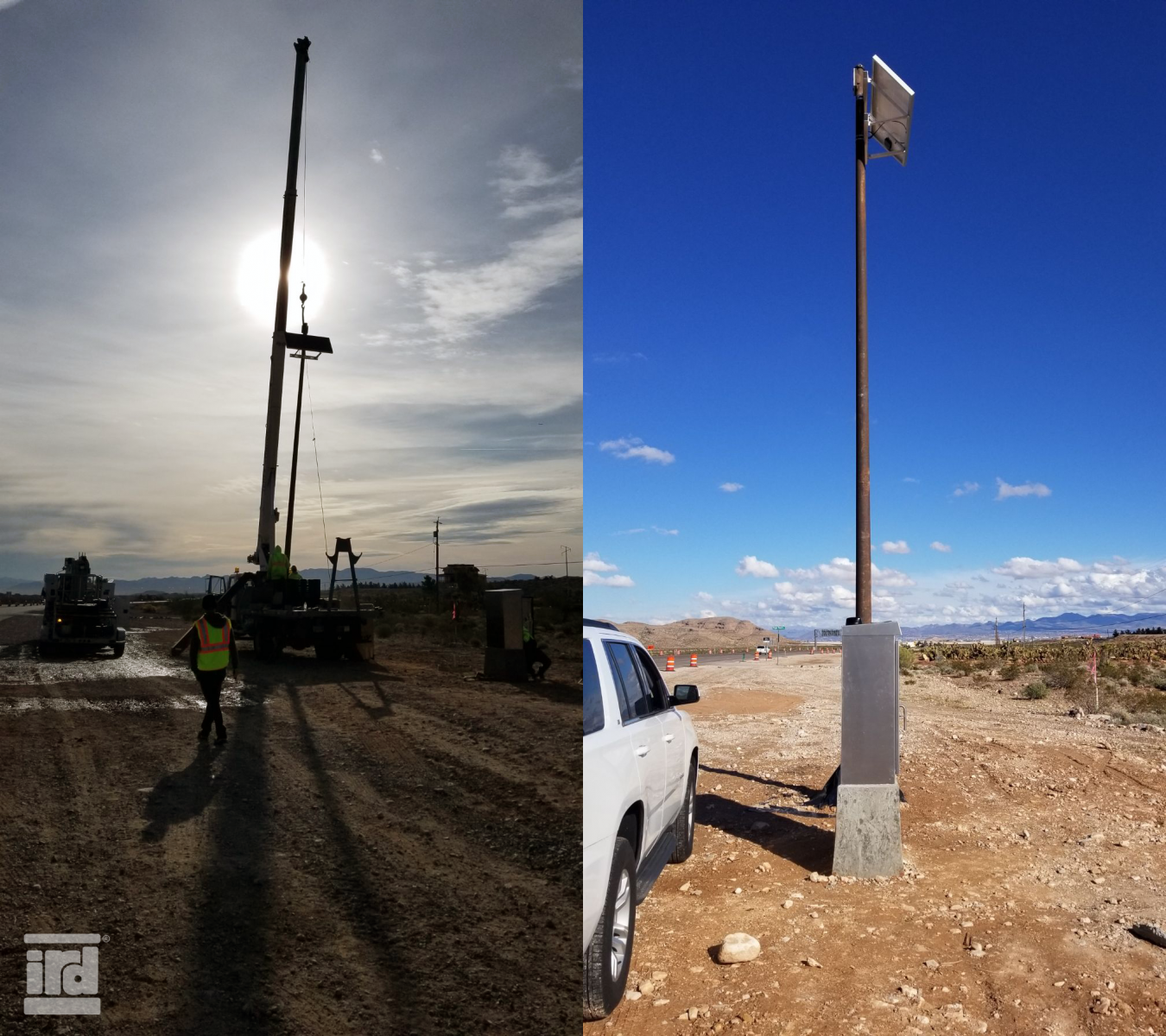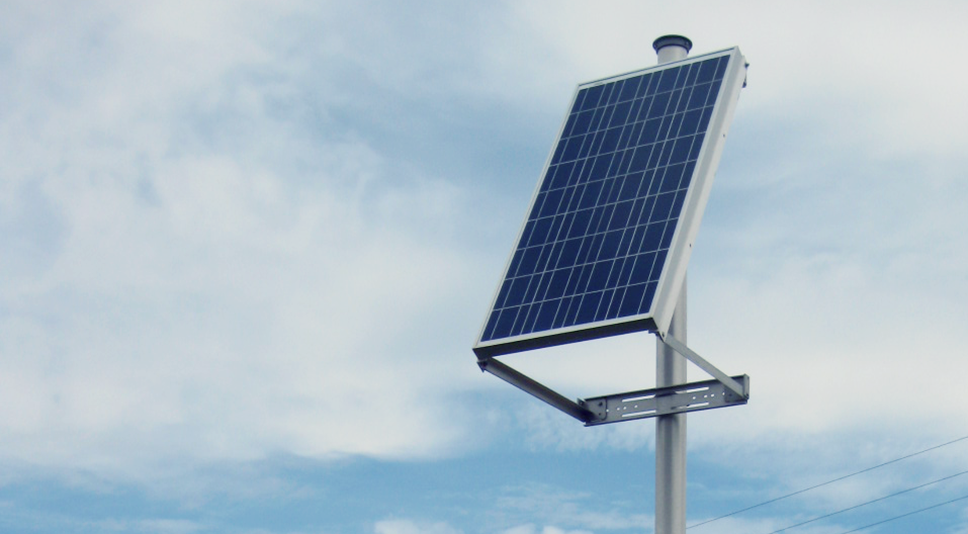Off-grid, standalone solutions for traffic and mobility monitoring are not in themselves anything new. Solar and wind power, for example, have been with us for decades. What is new is the pace of technological change, the physical and performance characteristics of emerging solutions, and the exciting possibilities they represent in terms of smarter, better-functioning systems, communities, and geographic regions.
Better batteries are driving the trend to renewables
This accelerating trend is a combination of developments in the power sources themselves, the emergence of better batteries—and so the requirement for fewer of them, even in more demanding climatic conditions—and the shrinking power needs of the application-specific technologies.
This all reduces the technology footprint and the financial burden.
Advances in solar and wind power benefit ITS
For instance, a solution using solar cell technology 20 years ago would have required three or four panels by comparison with the use of a single panel today. The individual panels themselves have progressed considerably—the solar panel(s) of two decades ago needed to be very precisely aligned in order to provide the necessary power. Current-generation panels are far more forgiving. If you have light, then you have power.
At the same time, wind-based power solutions are becoming smaller and quieter, as well as more effective and more robust; greater experience of designing and constructing them is reducing the maintenance requirement.
This increases deployability. Fewer, lighter components translate into less civil engineering—smaller foundations and bases, lighter poles and so on—and a reduced need to visit site, which is especially useful for more outlying locations. This either reduces cost or increases capability and geographic influence for a given cost.
WIM has become more efficient—so have other applications
The application-specific technology, such as a Weigh-In-Motion (WIM) system, has also become much more power-conscious. A design which 15 years ago would have had a power draw of 80W now requires less than half of that. At the same time, processing speeds have increased. The ‘low-power’ solution of yesterday simply doesn’t have the processing speeds of today's.

Solar Data Collection Site in Rural Nevada, USA
The fast pace of technological change pushes the need to find a partner with excellent domain knowledge, and to invest for the future. It means looking to use common-platform, open-standards solutions in order to achieve the best value. That way, as increasing or new functionalities arise, there is the scalability within the original system to accommodate them.
That means that when change or enhancement becomes necessary, end-users are not having to replace a whole system. Adding a new camera or license plate recognition capability, for instance, becomes a matter of just inserting a new card into the existing data bus. A more considered approach to initial specification and design will save money.
Smarter, low power systems offer advantages
Advances in power sources, and the ability to operate off-grid, are not happening in exclusivity.
These new lower-power systems are also becoming intrinsically smarter—quite literally, across the board. Every new card or module which slots into a data bus has its own microcontroller and, as well as uploading data, is continually self-monitoring. Performance can also be cross-referenced between individual system components, providing greater peace of mind.

Solar-powered Data Site with IRD's Highly-Efficient iSINC® Lite Electronics
Networked solutions can therefore achieve greater autonomy, becoming self-monitoring and to an extent self-healing, at least until remote fixes can take place or on-site maintenance can be scheduled.
Improvements in connectivity, even ahead of the large-scale rollout of 5G networks, and cloud-based solutions are making the passage of information back and forth ever easier. Soon, a virtual weigh station, for instance, will be capable of ‘holding' information for a time window of not just 30 days but a year or even a decade. At that stage, the question we need to ask will not be “Do we have enough information?” but, “Do we need, or are we even allowed to keep, all of this information?”
We are on the way to highly cost-efficient ‘information everywhere’ smart communities and regions.
Deploying ITS Everywhere
With an understanding of today’s renewable power sources, improvements to batteries, more efficient hardware, and new opportunities created by wireless connectivity, it is possible to envision a whole new paradigm for ITS. Agencies no longer need to account for “dead zones” off the grid. When data from everywhere is connected we can envision not just smart cities, but smart regions and even smart countries!



